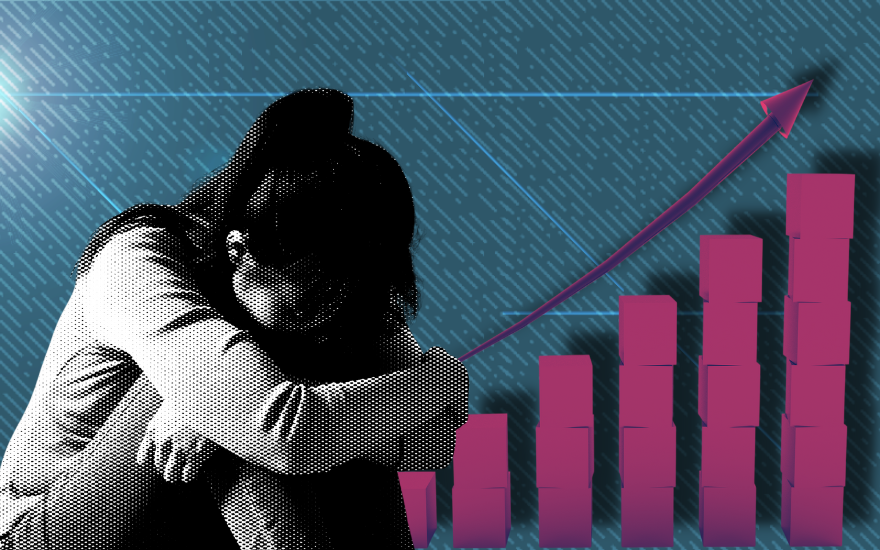According to a new study, American teen girls are not OK.
On Feb. 13, the Center for Disease Control and Prevention released The Youth Risk Behavior Survey Data Summary & Trends Report: 2011–2021 – its annual report on health behaviors among the nation’s high school-aged students which now includes data from 2021.
While many areas of adolescent health and well-being show signs of overall improvement, teenage girls are suffering.
“Across almost all measures of substance use, experiences of violence, mental health, and suicidal thoughts and behaviors, female students are faring more poorly than male students,” stated the report. “These differences, and the rates at which female students are reporting such negative experiences, are stark.”
Approximately 57% of female students surveyed reported persistent feelings of sadness and hopelessness, 25% made a suicide plan, and 10% attempted suicide in 2021. In 2011, 13% of boys and 19% of girls said they had seriously considered killing themselves. In 2021, 14% of boys and 30% of girls expressed the same sentiment.
Notably, while the report found that female adolescents are more likely to be injured during a suicide attempt than male students, the CDC did not include information about the youth suicide rate in 2021. A study published by researchers in 2019 found that suicides among female students ages 10-19 began increasing annually in 2007 and reached a 40-year high in 2015. However, as of 2016, boys ages 15-19 are 3.31 times more likely than girls the same age to die by suicide.
At least 20% of female students surveyed reported experiencing sexual violence between 2020 and 2021 and 14% said they had been physically forced to have sex. The percentage of female students who had experienced sexual violence increased by 3% between 2017 and 2021.
The CDC found that female students are more likely than their male peers to miss school because of safety concerns. While 18% of male students said they experienced poor mental health in the previous 30 days, 41% of females reported poor mental health during the same period.
In 2021, female students were more likely than male students to drink alcohol and use marijuana or other illicit drugs, including prescription opioids.
Despite this, slightly more female students (89%) report being highly monitored by their parents as compared to male students (86%).
The specific causes of the downturn in female students’ well being are not clearly identified in the report. The report’s authors suggest the continuing impacts of school closures and the disruption to normal life caused by COVID-19 era restrictions are contributing factors to this year’s survey’s results.
Kathleen Ethier, the director of the CDC’s Division of Adolescent and School Health which conducts the survey, said American teenage girls are “suffering through an overwhelming wave of violence and trauma” which is “affecting their mental health,” per NBC News. If Ethier offered an explanation of the wave of violence and trauma, it was not included by the publication.
On April 1, 2022, the CDC said the pandemic “has created traumatic stressors that have the potential to further erode students’ mental wellbeing.” In December of 2021, US Surgeon General Dr. Vivek H. Murthy released a 53-page report also saying the pandemic as well as the media were the causes of the impending youth mental health crisis, per The New York Times. The reported noted symptoms of anxiety and depression were universally on the rise among adolescents.
“Young people are bombarded with messages through the media and popular culture that erode their sense of self-worth — telling them they are not good-looking enough, popular enough, smart enough or rich enough,” Dr. Murthy wrote in the report. “That comes as progress on legitimate, and distressing, issues like climate change, income inequality, racial injustice, the opioid epidemic and gun violence feels too slow.”
The Youth Risk Behavior Survey has been conducted annually for the last 30 years. This year, the responses of 17,232 high school students in the United States were included.

